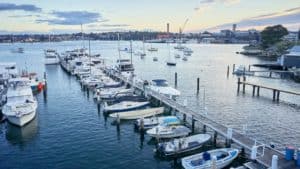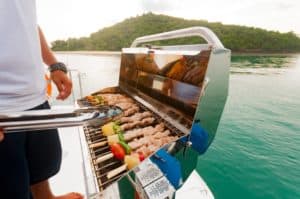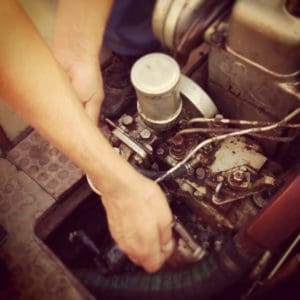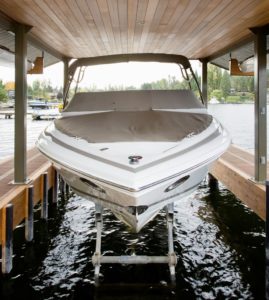When it comes to the law, ignorance is never a safe place. So if you’re a boat owner in New South Wales, it is vital to familiarize yourself with the NSW Boating Rules.
Knowledge is power and safety; therefore, getting acquainted with these NSW boating rules will keep you and help you avoid unpleasant situations in the waters.
Read to the end because this article will provide a comprehensive overview of the most critical NSW Government Rules for boat owners. Working tips for staying safe while boating in NSW will also be provided. Don’t go anywhere!
Do you own a boat in NSW?
Owning a boat is priceless! Using it on the waters without getting acquainted with NSW’s most important boating rules is not smart!
This exposition to NSW Boating Rules by Corleone Marinas will change all that and equip you with sufficient knowledge to keep safe while boating and avoid hefty fines.
Our guide is written in clear and simple terms, so it is very easy to read and understand. Even with its simplicity, it is furnished with all the vital rules and regulations you need to know regarding using a boat in NSW.
Choose Corleone Marinas for your boating needs in New South Wales!
Corleone Marinas Recreational Boating
Here at Corleone Marinas, we make parking your boat as easy as parking a car. As you tour Sydney’s magnificent waterways, you can do it in peace and joy because when you return, we will give you the boat the premium treatment and get it parked securely and in style!
Parking your boat with Sydney’s number one Marinas, Corleone Marinas, is the real definition of the good life. Due to our accessible location, your stay will be memorable and fully relaxing!
Visit our website to learn more about our services.
Types of Moorings or Berthings
Private moorings
This sort of mooring allows you to moor your yacht in navigable waters. It is renewed annually. However, there is no guarantee of tenure, and the permit is not a lease of the seabed. The colour of the buoy is often yellow.
Commercial and club moorings
Commercial and club moorings licenses are only granted to enterprises that engage in commerce or offer marine-related services. Boating services can be supplied to the general public or a recognized organization, such as a boating club. Like the private mooring license, it is renewed yearly. Commercial boats often use orange buoys, whereas club vessels use red buoys.
Emergency moorings
As the name indicates, it is employed in emergencies to maintain, store, or keep vessels. To be qualified to moor your boat in an emergency situation, you must first get approval from relevant authorities; if the boat is moored without authorization, serious fines may apply. The buoy color for emergency moorings is blue.
Public or courtesy moorings
This is a temporary mooring. Transport for NSW provides free courtesy moorings. This kind allows anybody to temporarily park yachts in popular boating spots. Domestic and commercial vessels can also utilize it but must not be left unattended. This license is valid for at least 24 hours. Even though it is free, only one vessel may be tied to a courtesy mooring. Attaching other vessels to the anchored vessel is not permitted. Pink buoys are used for public or courtesy moorings.
Hybrid environmentally-friendly moorings
This new type of mooring in NSW is still being tested. It entails using environmentally friendly anchoring to conserve vulnerable seagrass communities while keeping boats safe at one of their favourite Shoal Bay spots. Four Hybrid-Environmentally Friendly Moorings have been erected at strategic sites across Shoal Bay. A 4.5t concrete gravity-weight is used to anchor the MarineFlex elasticated rode system on these moorings. Gravity-weight anchors guarantee that these moorings may be readily maintained to protect the safety of boaters.
First Class Mooring Services by Corleone Marinas
We at Corleone Marinas are open daily to provide first-class mooring services to the full satisfaction of every boater. We provide a full range of marina services, including wet berths, moorings, and slipways for boats up to 60 feet. Shipwrights and mechanics are also present for any need.
Our services include the following:
- Managing Berth Rental Services
- Providing quality daily assistance to clients
- Professional consulting and onsite staffing
- Marketing and promotional activities
- Government legislation & Environmental regulations
- Accounting and Reporting
Our services are reliable and flawless, which is why we are one of NSW’s most trusted.
NSW Boating Rules and Regulations
1. Speed Limits
Most areas have speed limits, which should be followed for your own safety. In places with speed signs, you must follow the signs’ directions. When there is no speed limit, you must resist the urge to Overspeed and always maintain a safe speed, even if it means going slower than the speed limit.
Speed limits are in knots and are indicated by arrows on the sign. They are typically 4 or 8 knots, but they can also be 6, 10, or 15 knots. 4 knots is approximately 7 km/h, or a fast walking speed. 6 knots is approximately 11km/h or jogging speed, while 15 knots is approximately 28km/h or fast running speed.
2. Riding a bow
Under no circumstances is this acceptable. Bow riding extends a portion of your body outside the moving vessel’s perimeter while in a position that increases your risk of falling overboard.
3. Giving way
Engine-powered boats must make way for a variety of other vessels, including:
- sailing vessels
- anything coming at you directly (alter course to the right)
- any incoming objects from the right
Boats must keep a distance of 60 meters from any divers or dive flags in the water.
4. Safe distance
Every boat must maintain a safe distance from people, other vessels, structures, and the shore. A safe distance provides adequate space to avoid accidents, personal injuries, or property damage. You must continually assess your distance from other vessels and people. When judging, you must always consider the surroundings and conditions, such as the weather, visibility, other vessels, your speed, and any impediment to determining the best and safest distance.
Boats must keep a distance of 60 meters from people, divers, boundaries, and dive flags in the water. There are a few exceptions when boats can keep less, such as when a vessel is human-powered, less than 5.5 meters long, or supporting swimmers or dives (without an auxiliary engine).
5. Alcohol Limits
In NSW, you are not permitted to drive a vessel if your blood alcohol concentration (BAC) is higher than the legal limit or if you are under the influence of illegal drugs.
Passengers and any other company on board must also adhere to the legal limit.
Alcohol can have a negative impact on your coordination, judgment, vision, reaction time, and balance. Passengers are restricted to prevent them from falling overboard.
The BAC limit for the driver or anyone steering the boat under the age of 18 is 0.00. For recreational vessels, the limit for those over the age of 18 is 0.05, and for commercial vessels, the limit is 0.02. To ensure compliance, police may randomly administer an alcohol test to you.
6. Overtaking
All vessels must maintain a safe distance from any vessel they are overtaking. Overtaking is permitted on either side of a vessel, but only when it is safe. Overtaking must be done at a safe distance and speed. You must not cut in front of the vessel you’re overtaking. If it is safe to do so, the vessel being overtaken must maintain course and speed.
7. Lookout
You must keep a proper lookout by eye and hearing at all times when riding. This allows you to assess your situation and the likelihood of a collision. This is critical for everyone’s safety on the sea. When keeping a proper watch, look all about you, even behind you. Keep an eye out for risks to prevent colliding with people, other boats, structures, land, or animals. Avoid making loud noises and take special precautions at night or in bad weather.
Safety Equipment
On the water, having fun shouldn’t ever come at the expense of the safety of any person or the passenger itself. Here are essential safety items you must have on board.
- Life Jackets
- Fire Bucket
- Anchor
- Fire Extinguisher
- Oars or Paddles
- Floating Torch and Sound Signal
- Emergency Position Indicating Radio Beacon
How to moor your vessel safely
Steps to moor your vessel safely
- Slow nearly to a halt, maneuver gently, and keep wash to a minimum.
- Consider winds and currents; it’s typically best to approach the mooring from the direction of the wind or current.
- Point the bow at the mooring buoy, then reverse to come to a complete stop right before the bow touches the buoy.
- Set the engine to neutral and retrieve the mooring.
When you’re tying up to a wharf or marina berth
- Secure your boat by tying it to the bow and stern using a rope.
- Tie to bollards or rings a short distance beyond the bow or stern if the mooring place provides them.
- Be watchful of the tide’s rise and fall.
When you’re leaving a mooring, wharf, or marina berth
- Before you untie, start your engine and let it idle.
- Before you untie, check your surroundings and other traffic.
- Check that all ropes are inside the vessel and not dangling in the water, where they might become entangled in the propeller.
- Wash as little as possible.
Advantages of Mooring your Boat at Corleone Marina
Maximum Security
Mooring your boat at Corleone Marina provides superior security that is not available when mooring your yacht alone on a river. Wet berths, moorings, and slipways for vessels up to 60 feet are available at Corleone Marina. Your boat can be secured in its own boat slip or moored to a mooring buoy. In any case, your boat will be safe and secure at our secure marina.
Protection against Harmful Weather Elements
Another advantage of the safe dock at Corleone Marina is that your boat will be sheltered from the weather. If your boat is firmly tied to one of our wet slips during a storm, it will not crash, safeguarding the boat and its components from harm.
Convenience & Time
You will save a lot of time by not having to load, tow, and launch your boat when it is parked at Corleone Marina. With our marina, you can easily access your boat anytime you want.
High-Quality Service & Repair
Corleone Marina, being a professional marina, provides a crew of highly skilled and experienced shipwrights and mechanics to provide extensive maintenance and repair of your boats, yachts, and other watercraft.
Why do people choose Corleone Marinas Sydney?
Corleone Marinas in Sydney is the most reliable and dependable marina. Some of the reasons why we are the people’s choice are:
- Our mooring service comes with a range of exceptional amenities and services to help keep your vessel safe and secured.
- Our unbeatable mooring service can easily be accessed via the following places: Balmain, Drummoyne, Elizabeth bay, and Long Island.
- Our staff and workers are friendly, helpful staff, interactive, and committed to assisting you with any needs.
- Our rates are affordable.
We are eagerly anticipating your visit to Corleone Marinas.
Frequently Asked Questions about NSW Boating Rules
Q: Is there a ruling about the boat’s fuel?
A: There is no specific rule about the type of fuel your boat must use, but you should make sure it is appropriate for the engine.
Q: Can I ride my boat after a few glasses of wine?
A: It is best to be sober when on the waters. If your alcohol level exceeds the required limit, you will place yourself at risk.
Final Thoughts
Don’t try to cut corners!
This overview of NSW boating rules is meant to be informative and enlightening. Remember that being prepared and safe is the best way to maximize your enjoyment of your time on the lake. Make certain that you follow all applicable rules and regulations and have the required safety equipment on board your boat.
However, Corleone Marinas is the place to go to enjoy a professional mooring service in neatness and all-around excellence. Take advantage of our Marinas in Sydney and keep your vessels happy and secure. We are available at Elizabeth Bay, Balmain, Long Island, and Drummoyne.
Contact us today and start mooring your vessel without worry.






